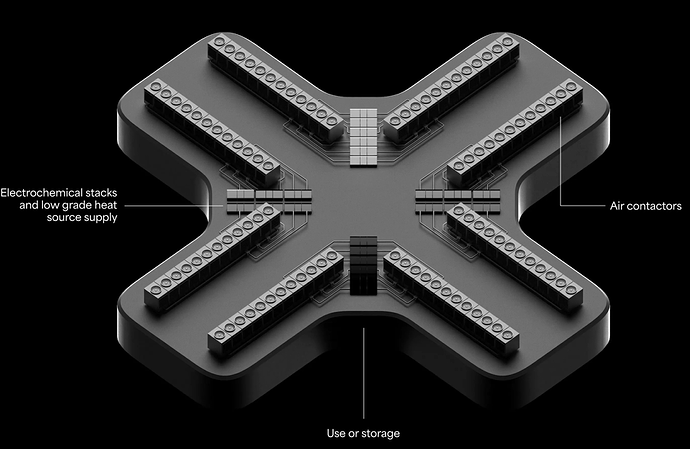Description of the Company
YAMA is a company that was established in France in 2023 by Aurélie Gonzalez, Valentin Fougerit and Harry Macpherson with a startup capital of $3 million equity. It currently has 13 employees. It uses direct air capture, a technology that can be scaled up fastly for two reasons. First, it ‘combines advanced electrochemical process with scalable low-grade heat sources’, decreasing the use of energy to the greatest extent possible. Second, it is not costly. Indeed, the first mega plant that will be launched in 2032 is expected to remove a ton of CO2 at a cost inferior to $250.
CDR Support
The company has received funding from Bpifrance, a public innovation bank based in France, in the form of grants and debt.
CDR Market
The company participates in the voluntary carbon market and it has a wide pool of clients including an environmental foundation, deeptech incubator and a French regional administration. In July 2024, Yama received $3 million from a large group of investors and it uses this fund to upscale its operations 50 fold.
CDR Regulations
There were no CDR-specific requirements that were in place when the company started its operations but the company is benefitting from standards provided by Verra, Gold Standard, Puro and Isometric. The company has indicated that each of the standards has a DAC module and that the choice of the standard could be influenced by the EU Carbon Removals and Carbon Farming Certification Regulation which might integrate some of them. However, it has stressed that it is even more important to have the right storage technologies and partner with entities that make use of the approved regulation.
CDR Outlook
The company has highlighted that within the next 10 years all CDR markets are likely to become compliance markets, a transition that can be supported by the voluntary markets that currently operate.
The company has also recently established a partnership with a Kenya-based systems integrator and project development company for a potential implementation of direct air carbon capture projects in East Africa when technology is de-risked.
The company plans to expand its business globally by targeting the North American market.
The company has highlighted that CDR regulations and prices as well as the necessity to choose the appropriate time frame for CDR deployment are factors posing obstacles against the long-term deployment of CDR. In addition, it has stressed that the level of public trust is not sufficiently high so as to enable timely CO2 removal. Moreover, it has highlighted that the CDR activities can only be adequately scaled if more funding is provided. That said, it has argued that the EU CRCF Regulation and last report of the EU on CDR can facilitate long term CDR deployment. However, it has also cautioned that a more ‘refined CDR roadmap’ that has separate targets for the years 2030, 2035 and 2040 rather than a single target for the year 2050 should be established.
CDR and Society
The pilot project that the company is currently working on does not require the obtainment of consent as it does not sequester carbon. According to the company, it is necessary to obtain the consent of local communities by engaging with them and the sequestration partner before establishing the demo plant in the future if carbon is sequestered underground.

